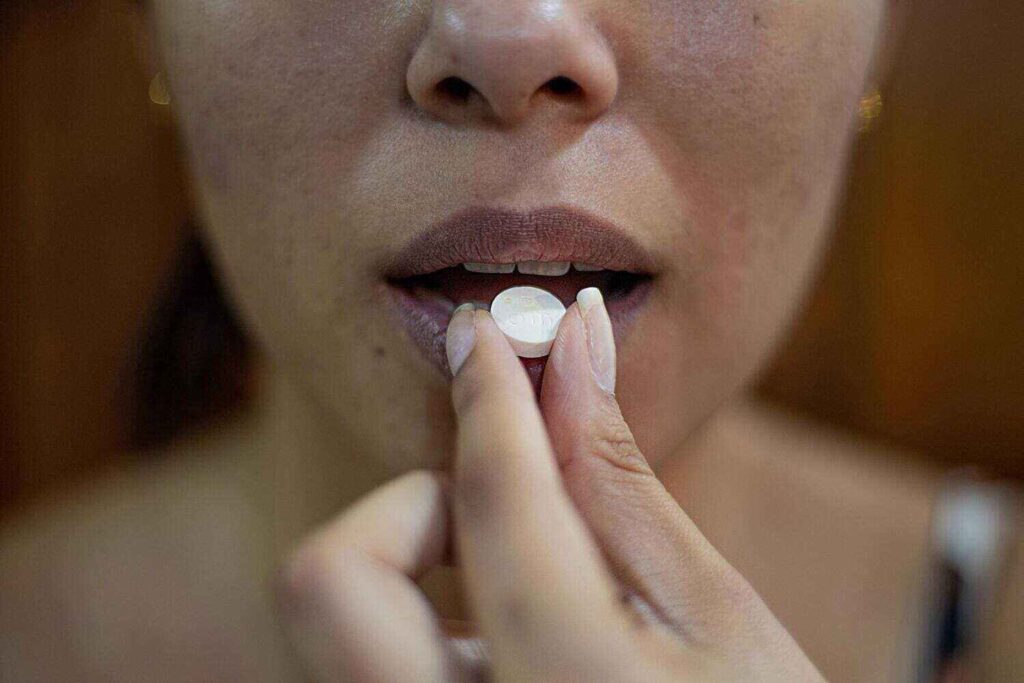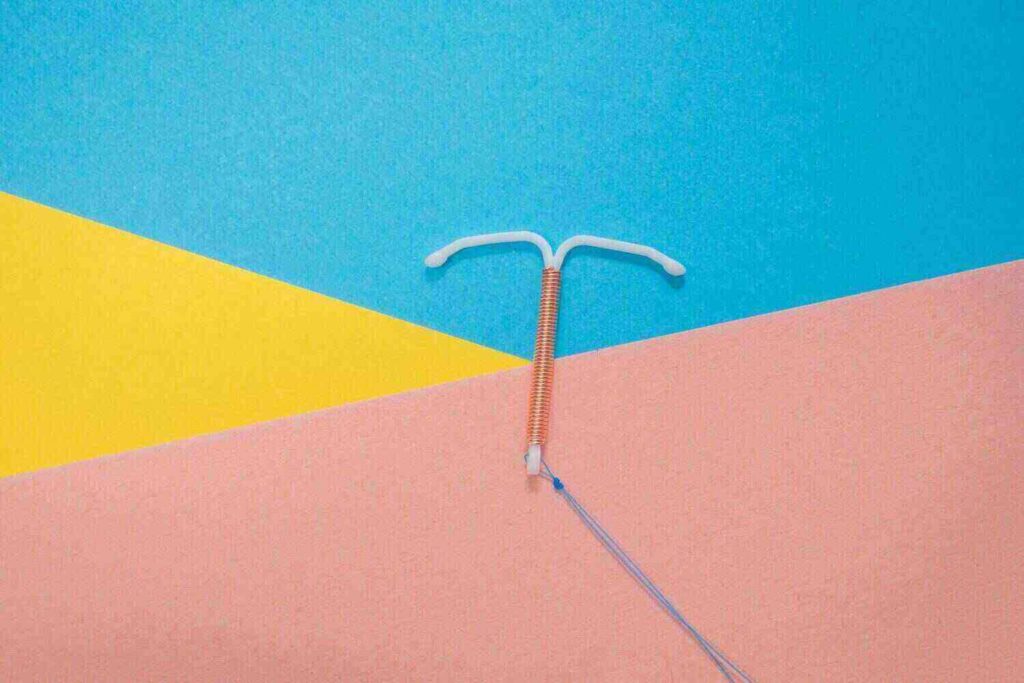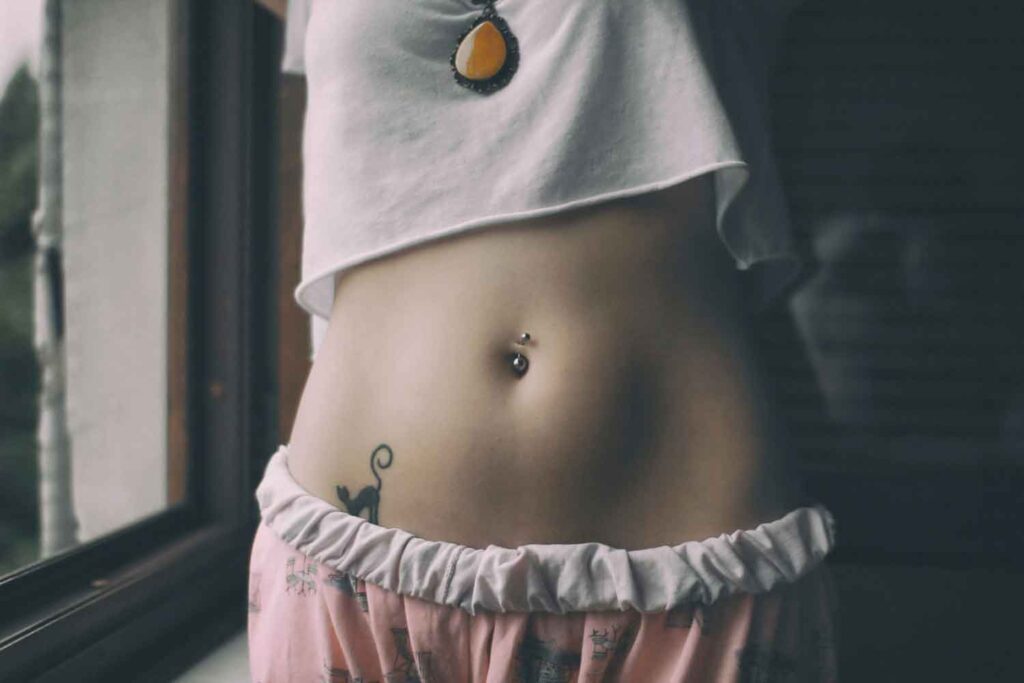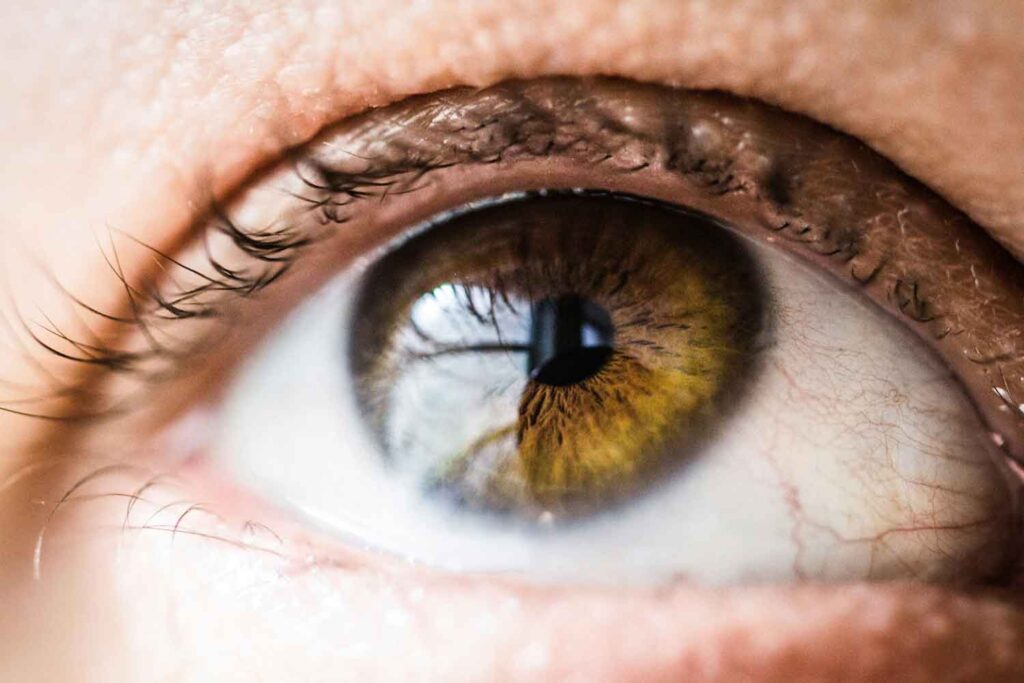Rejected Belly Button Piercing Signs

The belly button piercing you were so excited to get doesn’t seem healing. But then again, you’re not sure. You probably wonder if you should see a doctor or wait it out. Want to know the signs of a rejected belly button piercing? Here’s what to watch out for.
Photo: Unsplash
How to Know If Your Belly Button Piercing is Rejecting
According to Medical News Today, all piercings carry a risk of rejection. However, surface piercings, like belly button piercings, are at an elevated risk of rejection even though they usually fare better than the others.
Medical News Today says, “Surface piercings may be prone to rejection just because it is easier for the body to push the jewelry out of a small amount of skin.”
Rejection could be due to human error or bad luck. Medical News Today says, “If the piercing was done correctly and the person looked after it properly, the rejection may just be bad luck.”
With that said, you’ll notice if your belly button piercing is rejecting. Medical News Today recommends looking out for:
- The piercing hole increasing in size
- Differences in how the jewelry is hanging
- The jewelry moving more freely
- The jewelry becoming visible under the skin
- More of the jewelry becoming visible outside the piercing
- Prolonged irritation, soreness, or dryness
Remember, a piercing being rejected differs from the piercing being infected, even though they can sometimes present similarly.
Healthline states an infected piercing can have a rash, redness, swelling, and a foul discharge. In the case of an infected piercing, you can chat with your piercer or doctor before treating it at home.
Byrdie actually suggests getting medical attention immediately. They said, “If at any point you notice a rash that wasn’t there before, seek medical help immediately.”
If you have symptoms of infection, Lauren Dozier, MD, a dermatologist, and medical director, is quoted by Byrdie as saying, “I always recommend seeing a physician, such as a dermatologist, for evaluation and treatment right away.”
How to Stop a Belly Button Piercing From Rejecting
Chances are you don’t want to be without your precious piercing. You’ve probably paid a lot for it and think it looks really cute. However, if your body rejects the piercing, you must listen and take action. Here’s what you do.
Remove the Piercing
Medical News Today suggests removing the jewelry if you want to stop your belly button piercing from rejecting. While this may seem counterproductive, it is actually the best thing to do. Medical News Today says, “Keeping the jewelry in increases the chances of scarring.” If there is scarring, you probably can’t get the area pierced again.
Contact Your Piercer
So, after you’ve removed your piercing, it’s time to contact your piercer. Ask your piercer about using a different type of jewelry.
Byrdie says popular belly button jewelry is:
- Twister spiral
- Curved barbell
- Captive bead
- Reverse/Top-down
- Dangle
- Non-dangle
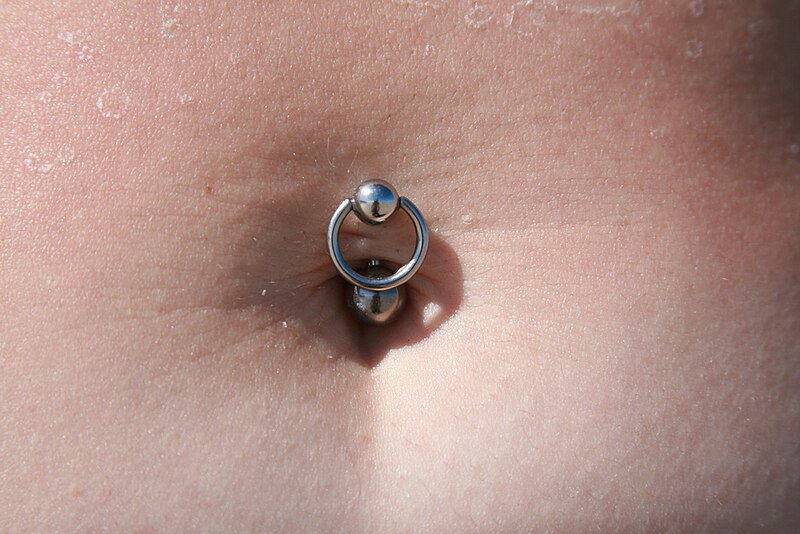
In addition to that, the material used to make the jewelry is significant. Dozier told Byrdie it’s the safest option. She said. “[Implant-grade] stainless steel is usually the safest type of metal for a piercing due to its low irritant or allergic sensitizing potential,”
However, if you’re allergic to nickel, you can try the medical-grade titanium and gold. Healthline also said, “Opt for a belly button ring made of 14- or 18-karat gold, titanium, surgical steel, or niobium”. Healthline also mentioned that nickel alloys and brass might increase your risk for an allergic reaction. Therefore, make sure to find out what options your piercer has available.
Medical News Today says, “Thicker-gauge jewelry or a different shape or material may help the piercing heal and settle into place better.”
Don’t Use Bandages
You may be tempted to use bandages or coverings on your rejected belly button piercing but don’t. Medical News Today says that doing that may not keep your piercing in place. In addition to that, it could delay healing.
However, there are some instances where you can cover your belly button piercing. Healthline says, “Use a protective bandage when you exercise and clean up the area afterward to avoid irritation or infection.”
How to Prevent a Rejected Belly Button Piercing
You can sometimes prevent your body from rejecting your belly button piercing. According to Medical News Today, having a professional piercer who adheres to best practices can reduce your chances of getting a rejected piercing. They said, “It is essential to select a piercer who is familiar with the body’s anatomy, the healing process, and where best to place a piercing.”
In addition, Medical News Today says that the type of piercing matters. So, picking jewelry made of a suitable material such as steel or titanium can be beneficial. Medical News Today also said, “Using a thicker piece of jewelry might reduce the risk of rejection.”
Finally, make sure you practice excellent aftercare. If you’re not sure what to do, make sure you ask your piercer. However, the basics include cleaning your piercing daily with a saline solution and avoiding injury to the piercing. In addition to that, avoid soaking the piercing in anything that’s not a sterile saline solution; no, seawater definitely doesn’t count.
Takeaway
Are you wondering about the signs of a rejected belly button piercing? The signs include:
- Prolonged soreness.
- An increase in the size of the piercing hole.
- A notable difference in how the piercing hangs.
Fortunately, there are many ways to fix and prevent a rejected piercing. However, the methods may not always work, and you may have to start over.

